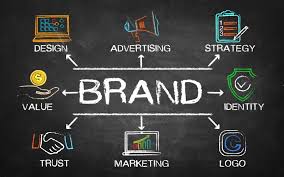On the business front, D2C is the new kid on the block and its track record has been phenomenal so far. These companies stand out for their distinctive character and goods, competitive prices, and particular emphasis on online digital marketing and e-commerce.
Not only this, these brands are upending and disrupting traditional retail patterns with the aim tocompletely revamp how customers shop and bond with brands.
For instance, some of the emerging D2C brands such as Mamaearth, CaratLane, and Nua merely took 2 years to reach the INR 100 Crore mark. This is a classic testament to the resounding success of D2C brands in the Indian market.
According to an Inc42 report, the D2C statistics are climbing exponentially:
- As of 2021, India has more than 800 D2C startups mushrooming in the country.
- India’s direct-to-consumer (D2C) market is likely to reach the whopping size of $100 billion by 2025 and is pulsing with immense promise.
The change is perceptible. The digital platforms have made it easier for businesses to have an active, ongoing relationship with their customers. Brands themselves are opting for direct-to-consumer selling models to stay intimately connected with their audience,defying to serve the middleman and retailers and instead pocket complete control over the sales and distribution process, from manufacturing to shipping and delivery. This enables the company to allocate resources for maximum growth.
For this reason, D2C has emerged as the firebrand alternative who are
The rabble- rousers
The disrupters
The bunch who likes to paddle their own canoe.
This may seem like the perfect scenario for the brands but the D2C route comes with its own set of roadblocks and challenges. Unlike regular marketing channels, navigating the D2C space needs careful, honest, and transparent marketing strategies sustain the fragile consumer trust and loyalty. With the market overflowing with options and copies, today’s consumer is spoiled with choices. Thus, it is no child’s play to ace the D2C model of marketing.
Here are 4 key steps that the D2C marketers can take to emerge successful in the market:
Step 1. Find your niche/specialisation. Jack of all trades is the master of none!

In a cut-throat market where customers are snowed under multiple options, only unparalleled expertise in your domain can take you to the top of your game and make your startup a cut above the rest. In order to identify this gold mine, it is imperative to identify gaps in the market, find a niche that has high demand but low competition. And then reap your harvest!
Need proof?
Mamaearth: In 2016, the husband and wife duo, Varun Alagh and Ghazal Alagh were searching for safe and toxin-free baby products for their newborn, saw only chemical based options, realised the need for organic and natural alternatives and founded Mamaearth in a moment of both crisis and inspiration.
Cut to 2023, Mamaearth’s career trajectory is scaling new heights.
Revenue Growth: According to Forbes, Mamaearth’s net worth is estimated to be around $100 million.
Funding: In April 2021, the brand raised $50 million in a Series C funding round, led by Sofina Ventures, Sequoia India, and Elevation Capital.
Awards and Recognition: Mamaearth has also won awards such as the Economic Times Iconic Brand of India Award, the Best Start-Up Award at the ET Innovation Awards, and the Asia’s Greatest Brands and Leaders Award.
This makes it one of the most valuable startups in India.
Thus, the founders felt the need of something, found it missing in the supermarket aisles, and then became the change they wanted to see in the world (Gandhi being Gandhi. Relevant as always).
In short, they were mission-focused and idea-first. Mamaearth recognized a gap in the market for safe, natural, and toxin-free products for babies and young children. The brand launched with a focus on baby care and gradually expanded to include skincare and hair care products for adults as well.
Step 2: Build a Strong Brand. Remember that reputation precedes the name!

Branding is the D2C mindset.
It is indispensable to the success of a Direct-to-customer business where the buyer needs to feel a personal bond and identify with the brand fraternity. Hence, the second rule in creating a stellar D2C name is designing a strong label.
By brand creation, the business playbook means that values, mission, and unique selling proposition (USP) of the business should go viral along with the product on the market grapevine. This happens with building engaging narratives.
Don’t sell a product. Tell a story.
Don’t pitch. Create experience.
And the D2C brand Licious did exactly that. It played by the book, chose storytelling and did impeccable branding.
Licious’ content strategy is centered around storytelling that emphasizes the quality and freshness of its products.
Licious’ website has a section dedicated to its “Farm to Fork” process. It tells the story of how Licious sources its products directly from farmers and fishermen, and ensures that they are processed and delivered fresh to customers. This story emphasizes the brand’s commitment to quality and freshness.
Not just the origin tattlers, Licious also tell Recipe Stories. Licious’ social media channels feature stories about how its products can be used in various recipes. For example, the brand’s Instagram page often features videos and images of different dishes made using Licious products. This story emphasizes the brand’s versatility and encourages customers to experiment with its products.
Licious has built a stronghold in India with a whopping Instagram following of 48.7K.
Through its storytelling content strategy, Licious has successfully positioned itself as a brand that offers high-quality, fresh and hygienic meat and seafood products.
The brand has experienced rapid growth, with a revenue of over INR 200 crore in the financial year 2020-21.
Step 3: Constantly improve and focus on Customer Experience. Customer is the king in the digital age!

Deconstruct the consumer’s pain points. Learn what they crave for.
And in case of Boat, founder Aman Gupta did exactly just that and gave the public what it didn’t have for the longest time.
High quality audio products in pocket- friendly prices.
Thus, the third mantra to D2C success is awareness and inclusiveness. This doesn’t happen if you sit in your ivory tower, cut off from your audience. Live and breathe R&D for this purpose and then deliver on detail.
Being a data devotee pays well!
The idea for Boat came about in 2016 when Aman Gupta, who was previously working in the consumer electronics industry, noticed a gap in the market for affordable, high-quality audio products in India.
Hence, Boat’s mission from the start was to offer stylish, high-quality products at affordable prices, while also providing excellent customer service.
The DRHP stated that Boat’s revenue grew from $43 million in fiscal year 2019 to $95 million in fiscal year 2020, representing a growth of 119.19%. This indicates that Boat has been experiencing significant growth in the past few years.
The brand’s products are known for their durability and functionality, which has helped to foster trust among customers.
The brand has since expanded its product range and become one of the leading D2C brands in India, with a strong focus on innovation, customer satisfaction, and social responsibility.
Step 4: Emotional aka Influencer Marketing:

The prime thing in the D2C space is to know your target audience and prospective customers. The new- age customers are intelligent and want transparency from the brands they look to buy from.
Thus, now, more than ever, word-of-mouth through social media reviews and influencers holds more water for consumers.
Boat has invested heavily in marketing, with a focus on social media, influencer marketing, and product placements. The brand has partnered with several popular influencers and celebrities to promote its products, which has helped to build brand awareness and drive sales.
With a following of 934K on Instagram, the brand’s website and social media channels have become important channels for driving sales and engaging with customers.
For example, since Boat poses itself as an audio brand that reflects the amalgamation of music, fashion, and action sports, it has recently signed and roped in Indian cricketer Shreyas Iyer as its brand ambassador.
Not only this, the brand had previously signed Indian cricketers such as KL Rahul, Shikhar Dhawan, Jasprit Bumrah, Rishabh Pant in a bid to make youth icons represent its label and influence scores of youngsters into buying affordable eardopes, headphones, speakers, charging cables, and power banks, among others.
The result?
In the financial year 2020-21, Boat reported revenues of INR 900 crores ($120 million), a 108% increase from the previous year.
Additionally, Boat’s products are available in over 5,000 retail stores across India, as well as on its own website and other e-commerce platforms such as Amazon, Nykaa Fashion, and Flipkart.
In summary, Direct-to-Customer business model is a hotline that dials right into the heart of the buyer experience. With these 4 steps, make sure your business is equipped with all the necessary nuts and bolts to run this competitive enterprise to success. Good luck!

